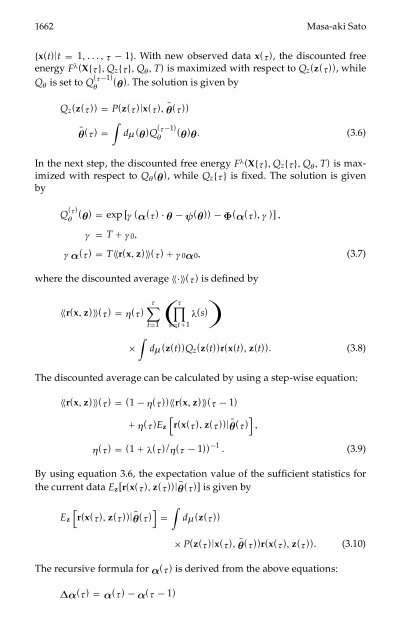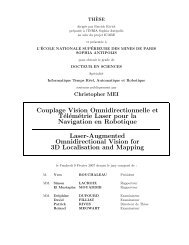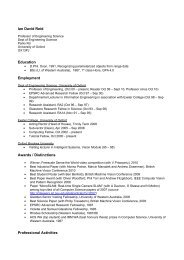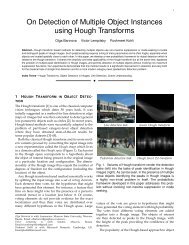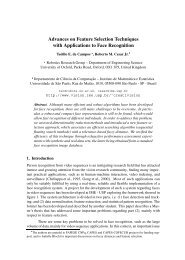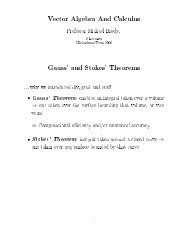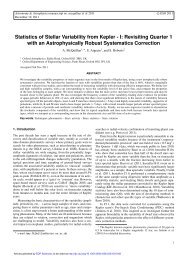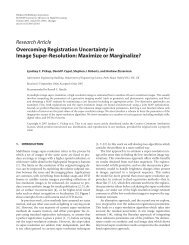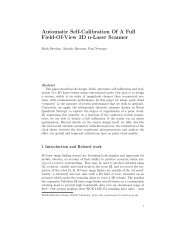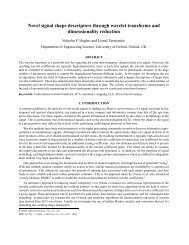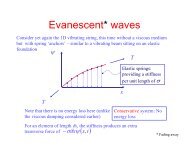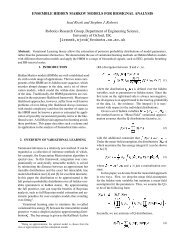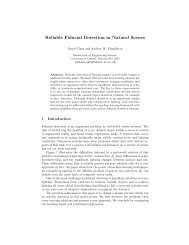Online Model Selection Based on the Variational Bayes
Online Model Selection Based on the Variational Bayes
Online Model Selection Based on the Variational Bayes
Create successful ePaper yourself
Turn your PDF publications into a flip-book with our unique Google optimized e-Paper software.
1662 Masa-aki Sato<br />
fx(t)|t D 1, . . . , t ¡ 1g. With new observed data x(t ), <strong>the</strong> discounted free<br />
energy Fl (Xft g, Qzftg, Qh , T) is maximized with respect to Qz(z(t )), while<br />
Qh is set to Q (t ¡1)<br />
(µ ). The soluti<strong>on</strong> is given by<br />
h<br />
Qz(z(t )) D P(z(t )|x(t ), N µ (t ))<br />
µ<br />
N (t<br />
Z<br />
) D<br />
dm (µ )Q(t ¡1)<br />
(µ h<br />
)µ. (3.6)<br />
In <strong>the</strong> next step, <strong>the</strong> discounted free energy F l(Xft g, Qzftg, Q h , T) is maximized<br />
with respect to Q h (µ ), while Qzft g is �xed. The soluti<strong>on</strong> is given<br />
by<br />
Q (t )<br />
h (µ ) D exp [c (® (t ) ¢ µ ¡ Ã (µ )) ¡ © (® (t ), c )] ,<br />
c D T C c 0,<br />
c ® (t ) D Thhr(x, z)ii(t ) C c 0®0, (3.7)<br />
where <strong>the</strong> discounted average hh¢ii(t ) is de�ned by<br />
hhr(x, z)ii(t ) D g(t )<br />
Z<br />
£<br />
tX<br />
�tY tD1<br />
l(s)<br />
sDtC1<br />
´<br />
dm (z(t))Qz(z(t))r(x(t), z(t)). (3.8)<br />
The discounted average can be calculated by using a step-wise equati<strong>on</strong>:<br />
hhr(x, z)ii(t ) D (1 ¡ g(t ))hhr(x, z)ii(t ¡ 1)<br />
h<br />
C g(t )Ez r(x(t ), z(t ))| µ<br />
N (t ) i<br />
,<br />
g(t ) D (1 C l(t )/g(t ¡ 1)) ¡1 . (3.9)<br />
By using equati<strong>on</strong> 3.6, <strong>the</strong> expectati<strong>on</strong> value of <strong>the</strong> suf�cient statistics for<br />
<strong>the</strong> current data Ez[r(x(t ), z(t ))| N µ (t )] is given by<br />
Ez<br />
h<br />
r(x(t ), z(t ))| µ<br />
N (t ) i Z<br />
D dm (z(t ))<br />
£ P(z(t )|x(t ), N µ (t ))r(x(t ), z(t )). (3.10)<br />
The recursive formula for ® (t ) is derived from <strong>the</strong> above equati<strong>on</strong>s:<br />
D® (t ) D ® (t ) ¡ ® (t ¡ 1)


